old man yells at cloud
in which i attempt response to the question, What happened to the avant-garde? in The Drift.
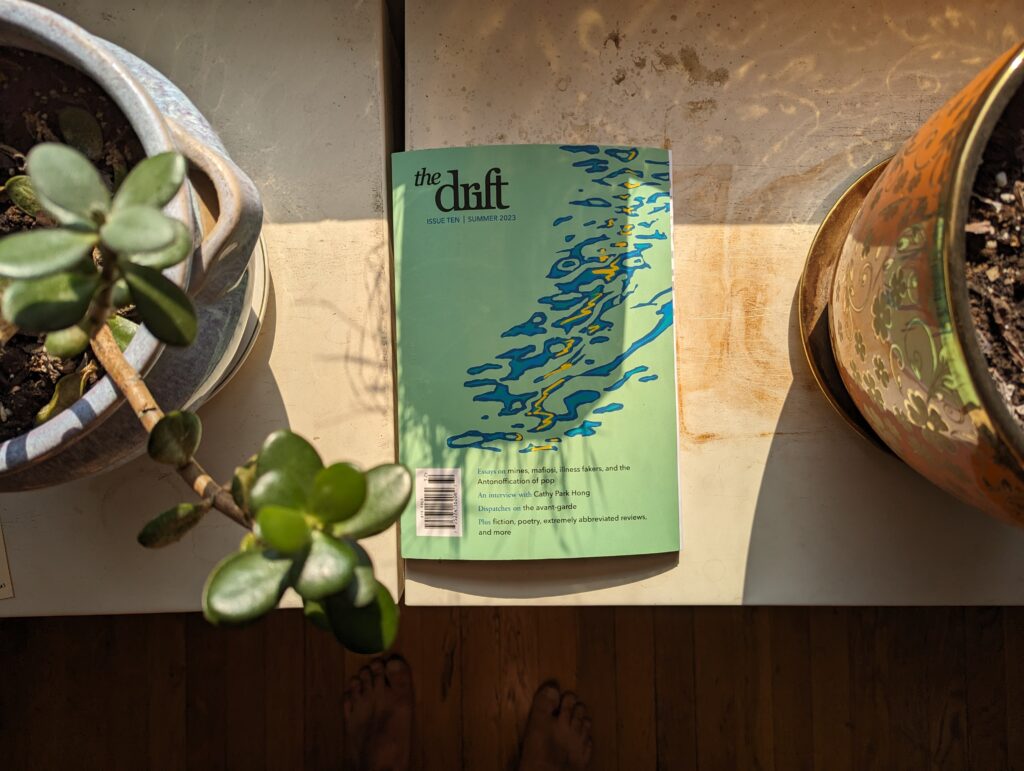
in which i attempt response to the question, What happened to the avant-garde? in The Drift.

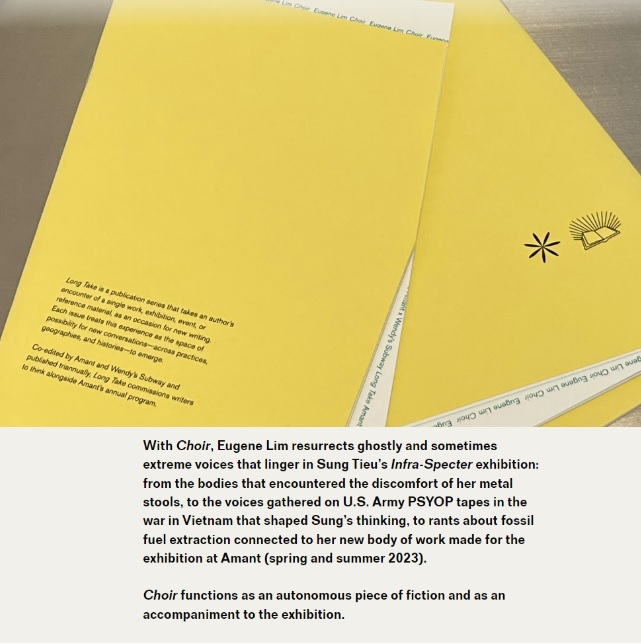
CHOIR is a chapbook I wrote inspired by Sung Tieu’s installation now on display at Amant in Williamsburg.
Many thanks to Wendy’s Subway and Amant for commissioning this work. You can purchase CHOIR here: https://wendyssubway.com/publishing/titles/choir
You can read more about Sung Tieu’s show here: https://www.artforum.com/print/202304/catherine-quan-damman-on-sung-tieu-and-the-art-of-derivative-critique-90275.
You can visit Sung Tieu’s Infra-Spector in Brooklyn, now through September 24, 2023, at Amant.

“The Science Fiction Writer,” an excerpt from the novel-in-slow-progress, appears in McSweeney’s Quarterly Concern #70, which you can pick up here.
Inside Issue 70—compiled by deputy editor James Yeh—you’ll find brilliant fiction (and two essays) from places near and far; including Patrick Cottrell’s story about a surprisingly indelible Denver bar experience; poignant, previously untranslated fiction from beloved Danish writer Tove Ditlevsen; Argentine writer Olivia Gallo’s English language debut about rampaging urban clowns; the rise and fall of an unusual family of undocumented workers in rural California by Francisco González; and Indian writer Amit Chaudhuri’s sojourn to the childhood home of Brooklyn native Neil Diamond. Readers will be sure to delight in Guggenheim recipient Edward Gauvin’s novella-length memoir-of-sorts in the form of contributors’ notes, absorbing short stories about a celebrated pianist (Lisa Hsiao Chen) and a reclusive science-fiction novelist (Eugene Lim), flash fiction by Véronique Darwin and Kevin Hyde, and a suite of thirty-six very short stories by the outsider poet Sparrow. Plus letters from Seoul, Buenos Aires, Las Vegas, Philadelphia, and Lake Zurich, Illinois, by E. Tammy Kim, Drew Millard, and more.
Triple Canopy’s latest issue (#28) is titled “True to Life,” and “considers how we narrate our lives, and how these narratives provide a sense of oneself in the world (and of the world itself).”
S, thru his AA practice and his secret shamanism, introduced me to the idea of gratitude lists… and I took it to create a kind of autofiction for the issue called “Redacted Gratitude Lists from the Second Year of the Plague.” It is illustrated by Tao Lin’s rather mesmerizing mandala artwork.

The Quote Real World
is many things, including
this short fiction recently published in the adventurous and excellent new journal 128 Lit
and an excerpt from a novel-in-slow-(illusory)-progress.
As everyone knows, in America, one cannot be a novelist and make a living at it. There are various ways around this predicament, but all—except private wealth, suicide, or crime—require day jobs. Some choose to be critics (“eunuchs at the orgy”); most choose to be professors (teaching what?), and a few get the questionable privilege of becoming the script doctors, inspiration to, or simply brand of, a movie or stream show.
Me? At the time we’re talking about, I was still young, in my late twenties. I thought I was hot shit but was making a living (barely) as a part-time dog walker and take-out-food courier. I fancied myself a writer…
Read the rest here: https://www.128lit.org/eugene-lim
________________
The new edition of Fanny Howe’s INDIVISIBLE is out today from Semiotext(e). I had the great honor to write the intro.
https://mitpress.mit.edu/books/indivisible-new-edition
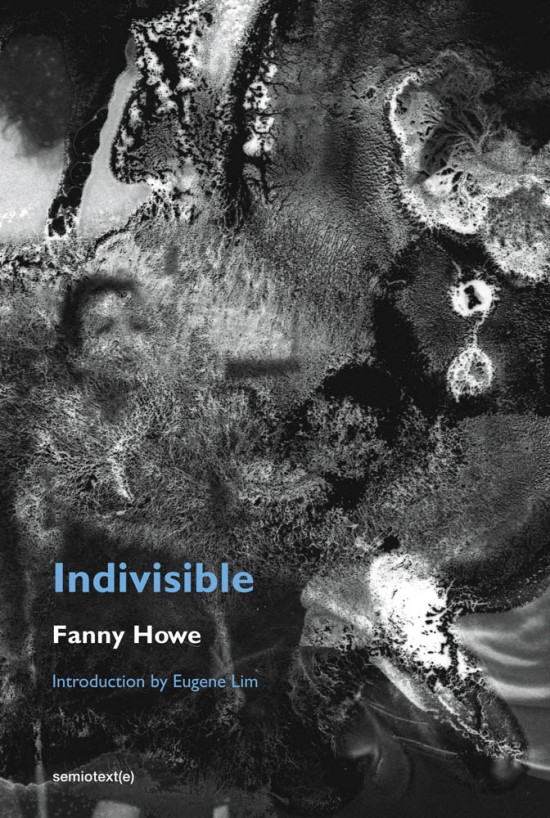
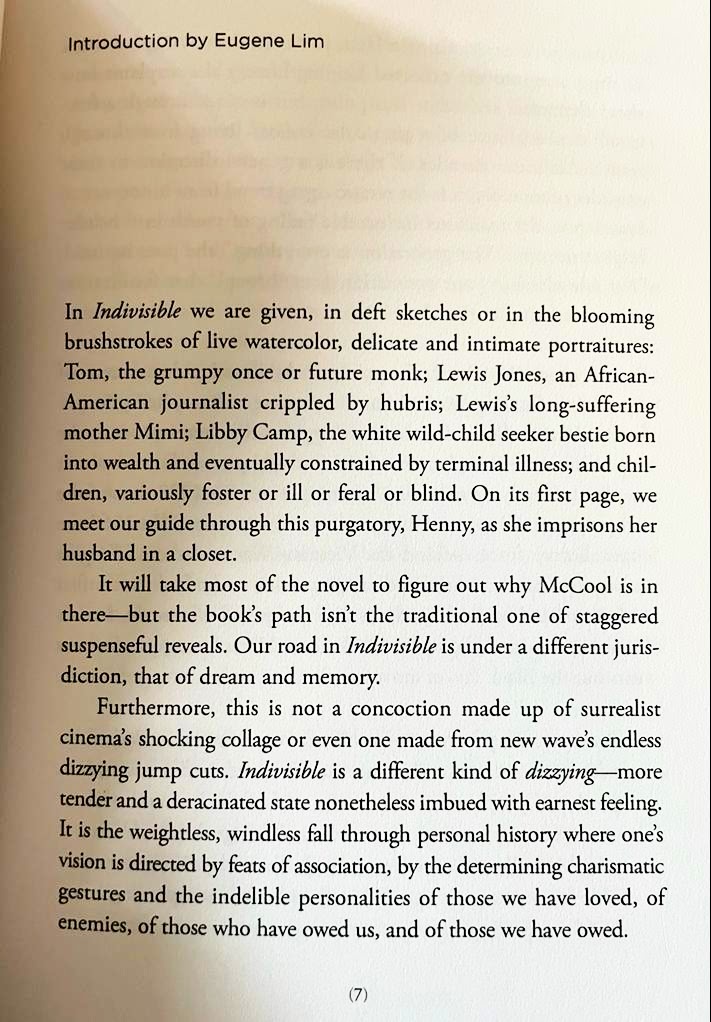
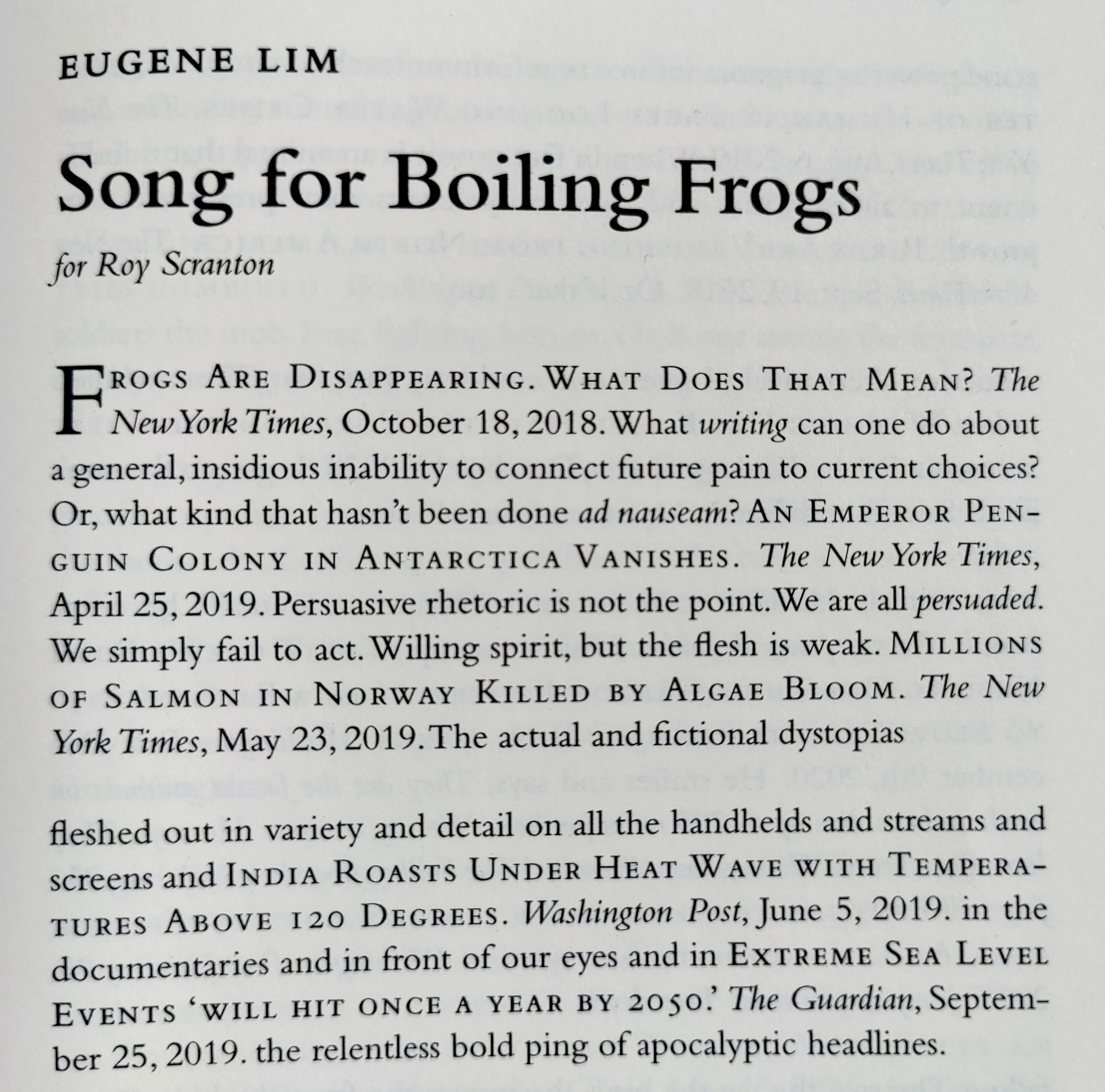
proud to be in this climate-themed issue, alongside greats like @GinaApostol, @shailjapatel, @JohannesGoranss, and others.
More info here: https://www.massreview.org/node/10152
i’ve a new story out today on the new yörker website called What We Have Learned, What We Will Forget,What We Will Not Be Able to Forget
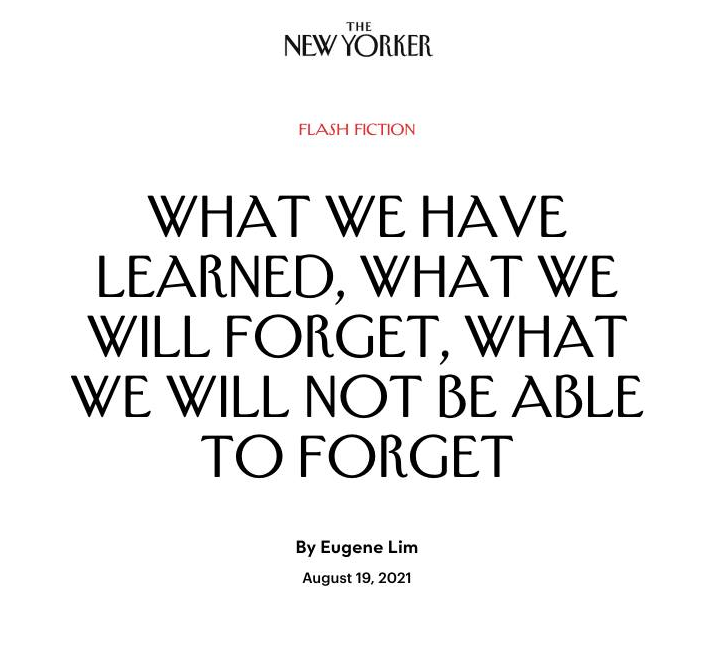

yesterday’s writing session was a low point producing a terrible poem slash yeats pun called The 2.0 Coming. first line: “The falcon says fuck you and flies off.”
o well. today, i’ve a new story in The Baffler. it’s called SPACE DETECTIVE and takes place in your kitchen the day before yesterday i mean in the flung far future. maybe you’ll like it? thanks to JW.
SPACE DETECTIVE HAS HER FEET ON THE DESK of her basement office. She is profoundly bored. A series of disasters has conspired to confine her to her house for several months.
She had thought she was too old for it but several of her friends have already done it. The thick fog of boredom, which she momentarily and perfunctorily acknowledges as an aspect of entitlement, finally convinces her to go. She activates the cryogen casket. She takes the pill. She puts on the suit and helmet. She double checks the IV lines and lays down in the casket. She hums the passcode and is instantly sent to Videogame.
read the rest here: https://thebaffler.com/fiction/space-detective-lim
april 2, 2020 | this morning i remembered this short short that derek white published in sleepingfish ten years ago and that seems now autobiographical and which i reproduce here in its entirety.
the whole Sleepingfish issue (edited by derek white and gary lutz) is available as a PDF through the calamari archive here: https://www.calamaripress.com/SF/8/line.htm


i’ve a doubling/cleaving short piece called “Diptych” in the latest issue of the Iowa Review. many thanks to editor Evan James. it’s a beaut of an issue with pieces by Joyelle McSweeney, Stacey Levine, CA Conrad, Kate Bernheimer, Wayne Koestenbaum and many amazing others. here’s a bit from my piece:


seems in/appropriate to allude to maestro and blind librarian jorge luis borges, who i’ve been thinking about prolly too much as i lay about recovering from yet another eye surgery… the dapper manhattan ophthalmologist said in the post-op meeting—and rather frustratingly failed to detail any further what he might mean—that when he went into my eyeball that it had felt very “unusual.” still i like the man very much even despite or maybe because he played jethro tull in the operating theater (during which i was rather squeamishly awake) … don’t worry. everyone says the eye should be nearly as good as before sometime very soon.
anyhoo. this only to say that in my rather mopey cyclops convalescence, i was gladdened this evening to receive copies of a chapbook made from a chapter from the novel-in-progress. it’s called THE BASEMENT FOOD COURT OF FORKING PATHS and the chapbook is a product of the editorial vision of David Gonzalez of Skylight Books, where copies are for sale. they should soon be available also through their soon-to-be website, which will be here. Cover art by Liana Jegers and design by Alex Hemming — many thanks to them!
[as an aside and basically unrelated to the story of the chapbook, the plot of the borges story involves a chinese professor named Doctor Yu Tsun, an early prototype for self-harming victims of the model minority myth, who justifies an act of thankless espionage because he “wished to prove to [the kaiser] that a yellow man could save his armies.”]
my chapter has little to do with borges’s tale (except perhaps in its thinking of the multiverse, chance, and regret) but does celebrate the grimy glory of the original and now-gone Golden Shopping Mall. the chapter also has not a little to do with music and so shout-outs to Danny Tunick and Chris Mannigan who guided the, um, research.
Here’s a bit from the chapbook:
I look up and see Muriel hit a record button. Then she holds up the phone and says:
Do you like it? I’m not sure what I think about it. Because my old one was getting so laggy I had to get a new one.For the most part I trusted the cloud. That is, I had faith in the current magic to get what I needed from my old exo-brain to the new one. I mean I trusted the marketplace to take somehow from my old phone to my new phone all my memories, years and years of correspondence, all my tiny keys to all my unbreakable tiny locks, lists of songs to private parties, top scores to games I never wanted to play, selfies in front of and by things I wanted to be proven once near. But there was one thing I didn’t trust the cloud with, at least not enough that I didn’t take precautions. These were old voicemails from a friend named Frank Exit who died about a year ago.
Available at Skylight Books and directly from Breaking & Entering Lit.

New fiction called “Shaggy Dog” up at the Booklyn Rail, an excerpt of a novel-in-progress.

The good doctor was working on a special kind of AI that anticipates your needs, and, of which, so claims Donna, the dog is a prototype. The program is turning out to work all too well, as the robots not only seem to anticipate when you want companionship or a beverage or the stereo turned on but quickly evolved to discover and emulate that which you most longed for—a desire perhaps unconscious, secret even from yourself—a desire which in most people turns out to be the recovery of the dead. This, though I’m not sure if I entirely believe or trust her explanation, is why, according to Donna, I thought the dog was the reincarnation of my deceased friend, Frank Exit.
“That’s impossible,” I say.
“Of course it isn’t,” Donna replies.
Read the rest at https://brooklynrail.org/2019/11/fiction/Shaggy-Dog
_________________
unrelated, but i didn’t know did you that the wikipedia entry for shaggy dog includes reference to the linguistic rube Goldberg mashing of this ditty called albuquerque by one weird al. end of report.
Lisa Chen and Anelise Chen and i got to visit the studio of someone who frequently gets called the grandfather of performance art, Tehching Hsieh. the resulting interview has just been published in the Believer magazine — and should be available online soon is available online here.
to talk to hsieh was really an honor. here’s my favorite part of the interview:
_________
Tehching Hsieh: In the beginning I couldn’t meet your kind of people. Your kind of people would say, “What is this guy, a stranger, an illegal?” Because your kind of people—this is the first time I’ve been interviewed by your kind of people in 42 years.
BLVR: Really? Wait, what do you mean, us “kind of people”?
TH: Asian American. [Laughter.] You get it! This is the first time. I’m not trying to make it an issue.
BLVR: You say this is the first time Asian Americans are interviewing you, which I find both surprising and not, but, you should know, for us, you are a very important precedent, a groundbreaker.
TH: I just wanted to say that it’s come late. Forty-two years late.
Read the whole interview here.
a lot of pitfalls when writing about the immigrant generation. or, to be particular and personal, i find it very difficult to write directly with any honesty about my parents, who i know worked harder and persisted in ways it’s not even in my constitution to comprehend. as, one assumes, was partly the goal. but from which a division is necessarily born.
N E S T S
I remember the only time I ever saw my mother cry. I was eating apricot pie.
—Joe Brainard, I RememberI remember my mother remembering her father.
I remember walking with my mother through the woods near her home. She points out a small purple flower. She says they called these “ring-flowers,” and in her childhood they would pluck these flowers and make from their stalks a kind of ring. I remember she didn’t stoop to pluck one but mimed the act… [Read the rest here.]
dearest library land—
i nostradamussed the future library keeping
our tart hearts in mind. spoiler :
ranganathan and readers advisory still rule, but
no makerspaces.
yours in allegiance,

The library of the future is more or less the same. That is, the branch is an actual and metaphoric Faraday cage. You enter, a node and a target, streamed at and pushed and yanked, penetrated by and extruding information, sloppy with it. And then your implants are cut off. Your watch, your glasses, jacket, underwear, your lenses, tablet, chips, your nanos—all go dry…
read the rest here along with the other authors in Wired’s “Future of Work” series including fiction by Laurie Penny, Charles Yu, Charlie Jane Anders, Nisi Shawl, Adam Rogers, Martha Wells, and a great one on smart contracts and crypto by Ken Liu.
very happy to have new fiction called “No Machine Could Do It” in latest Granta magazine.
I’d become friends with a Public Intellectual. He handled everything: scandal, sex, politics, political sex scandals, racism, weather, the racism of weather, Japanese cartoons. Everything was under his purview, but his specialty was the Future. He was a much more successful colleague at the university where I would occasionally adjunct. Several years ago entirely by accident, when collecting some papers from our department’s office, not knowing who he was, I saw him standing next to the faculty mailboxes with a copy of a book I’d just read. I was younger and new to the place and excitable – and so I started up a brief conversation about the book…
Read the rest at Granta (behind a paywall) at: https://granta.com/no-machine-could-do-it/
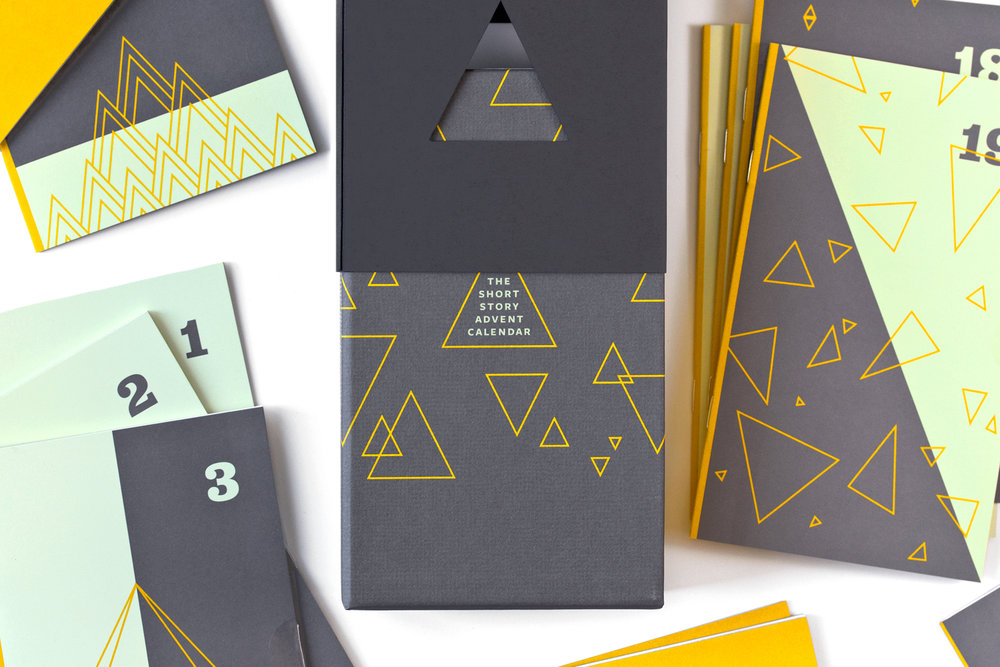
The 2018 Short Story Advent Calendar
Fourth time’s the charm. We’re back with another deluxe box set of 24 individually bound short stories to get you into the yuletide spirit.
The 2018 edition of the Short Story Advent Calendar might be our most ambitious yet, with stories from eight different countries and three different originating languages (don’t worry, we got the English versions). Plus, we set a new personal best for all-new material.
Contributors to the 2018 Short Story Advent Calendar include:
- Kevin Barry (Beatlebone, City of Bohane)
- Ben Greenman (What He’s Poised to Do, Don Quixotic)
- Etgar Keret (Suddenly, a Knock on the Door)
- R. O. Kwon (The Incendiaries)
- Sara Levine (Treasure Island!!!)
- and [REDACTED x 19]!
More info here: https://www.hingstonandolsen.com/store/the-2018-short-story-advent-calendar
i’ve a story up on @aaww wherein we’re all reincarnated as a plastic bags and robots.

It was no longer possible to understand being poor or defeated. Which meant she could no longer imagine it. This worried her because it meant if it were ever to happen she would then feel like a fool and this might somehow be more painful than the destitution but, more importantly, this realization worried her because it meant she no longer felt human.
The dysthemic artificial intelligence scientist took a book of poetry off the shelf and sat on her couch… [Read the rest here.]
Presented by Queens Museum and No Longer Empty as part of Mel Chin: All Over the Place, Soundtrack is a new work of collaborative sound art initiated by Chin with project curator Jace Clayton (aka DJ /rupture).Local artists, including L’Rain, DJ Aaron, DJ Ushka and Atropolis, and Robert Aiki Aubrey Lowe have transformed field recordings from the routes of the 1, 5, 7, E and F trains into compositions that bridge the mechanical and the human. From Eastchester in the Bronx to Brooklyn’s Coney Island, the far West Side of Manhattan to Flushing Meadows Corona Park, the commissioned works will use the sounds of the city’s transit system. However, the artists’ interpretations capture more than sounds of the city. They weave its ethos and creative potential into one of the most practical components of daily life: the commute. An average commute in New York City is 40 minutes long. The commissioned works are woven into a single mix that extends the entire length of this daily route. The mix also features novelists Jennifer Marie Brissett and Eugene Lim reading from their works.
To continue the spirit of experimentation, recordings from above and below ground will be available for the public to use in their own mixes under the Creative Commons License. This aspect of the project offers an opportunity for commuters to creatively consider every clack, rush of oncoming air, squeal and swoosh, door-closing announcement, and overheard conversation, perhaps even transforming the sounds into their own creative output. For Soundtrack, the subway map becomes a sound palette, and commuters, potential creators.
Soundtrack is produced by DJ /rupture, featuring (in order of appearance):
1. DJ /rupture in conversation with Mel Chin
2. DJ Aaron
3. L’Rain (with engineer and co-producer Chris Connors)
4. Reading from Elysium by Jennifer Marie Brissett
5. DJ /rupture in conversation with Mel Chin
6. DJ Ushka and Atropolis
7. Reading from Dear Cyborgs by Eugene Lim
8. DJ /rupture in conversation with Mel Chin
9. Reading from Elysium by Jennifer Marie Brissett
10. Robert Aiki Aubrey Lowe
11. Reading from Dear Cyborgs by Eugene Lim
12. Robert Aiki Aubrey Lowe
in the latest issue of The Believer (which has a dope cover by Zeke Peña inspired by a photograph of Jesús Manuel Mena Garza) i’ve a bit of instructional prose :
This is how you leave a party without saying goodbye—also known, with differing connotations, as the Gypsy fade, the Irish leave, or filer à l’anglaise. It’s easy. It’s like Allen Carr’s The Easy Way to Stop Smoking. You can’t give a précis for enchantment, but here’s my paraphrase of Carr’s method: stop smoking… [read more]
__________
this piece on grief and friendship was with and for shannon steneck and ning li.
read the piece here.
the rules for 7×7 are below.
The game is a variation on the Surrealist game of exquisite corpse, designed to guide a writer and artist into an improvised collaboration.
Once the participants are “paired,” the participants determine a convenient date to begin.
The participants decide amongst themselves who starts the exchange: the artist creates a picture, or the writer begins a new composition.
The following day, the other collaborator responds according to his discipline, with words or an image.
In this fashion, the two participants alternate turns, interpreting and elaborating on what has come previously in the spirit of “Yes, and…” No narrative swerving is off-limits; it is likely and encouraged that the collaborative process move the collaboration into territories neither participant would have conceived on his own. The participants need not follow traditional storytelling conventions as long as the collaboration moves “forward.”
Contributions should not take more than 2 hours to complete. The visual artist is limited to one image per turn. A writing contribution should not be longer than a single double-spaced page or 300 words.
The game is ended upon completion of 7 image-text pairings.
My essay on experimental fiction appears in the latest Brooklyn Rail. It was first published in Something On Paper #5 and is based on a talk given at Naropa University on October 4th, 2016.
The traditional novel is like a car whose purpose is to deliver the reader from point A, through an emotional Freytag path, to point B. But the experimental writer here, too clever for her own good, has taken apart and reassembled the auto, repurposed its chassis, catalytic converter, spark plugs, etc., in order to make a sculpture, which she displays proudly and dedicates — so says the plinth on which it is placed — to revolution. Or maybe The Revolution. Erickson et al. complain upon seeing it: Phooie, now we’ll have to hitchhike.
Read the rest here.
I have some fiction in the latest Portland Review, available here.
flash fiction published in the UK’s Roman Road Journal.
which, come to think of it, is revisiting this yesteryear blurt.
In Oct 2016 I gave a talk at Naropa on experimental writing defined as an integral / lower limit WCW / upper limit Audre Lorde. An essay based on it just published in their Something-on-Paper #5.
“Our current condition of ambient despair gets an excellent portraiture in Evelyn Hampton’s The Aleatory Abyss. It’s an obscure book about being obscure—or at least it is a book about occupying forgotten interstitial spaces and about being of and among technological detritus. In Hampton’s world we live our lives not in streets, schools, libraries, parks, or other public commons but online and in Barnes & Nobles, Starbucks, malls, parking lots, and other privatized spaces; that is, Hampton shows us a familiar world. Personhood and agency here in the Anthropocene are moribund concepts, if not already vestigial, and great creatures called multinationals and state actors roam the terrain while we endure like plankton or parasites below and beside their decisions. This short book also pays homage to and is haunted by Hampton’s friend, the activist and writer Mark Baumer, who died in the middle of a mythic project that found him walking barefoot across America. Both artists are turned helplessly into elegists. Baumer’s work was part durational performance piece, part environmental fundraiser, part quixotic publicity stunt, and part personal protest. He kept record of his walk through a series of videos and blog posts, many of them heartbreakingly prescient, especially his final video, posted the day after the Trump inauguration, the day he died when struck by an SUV. Hampton’s work transmutes Baumer’s extroverted dissent, his syncopated poetic voice, and his manic video edits into its twinned flip: an equally clear-eyed but introverted analysis, a quieter but no less fierce objection. The Aleatory Abyss is a beautiful work, and profits from sales will go to the charity Mark Baumer was walking for: the FANG collective…”
Read the rest at: https://themillions.com/2017/12/year-reading-eugene-lim.html
Merce Cunningham sits very high in my personal pantheon. In 2011 we got tickets to his company’s final performances. These were big, moving nights for us — even as I’ve always found it hard to describe what is so emotionally moving about his work. I wrestled with this and wrote about it for the Paris Review’s “Revisited” series.
…So even prior to (or outside of) the physical dance, there was already a parallel conceptual-art project that was an intense durational-performance work, an almost literal dance with death, a mourning ritual, an explosion of life within death, and an enlightened embracing and letting go of time all at once.
Read the piece here: https://www.theparisreview.org/blog/2017/09/22/merce-cunninghams-posthumous-legacy-plan/